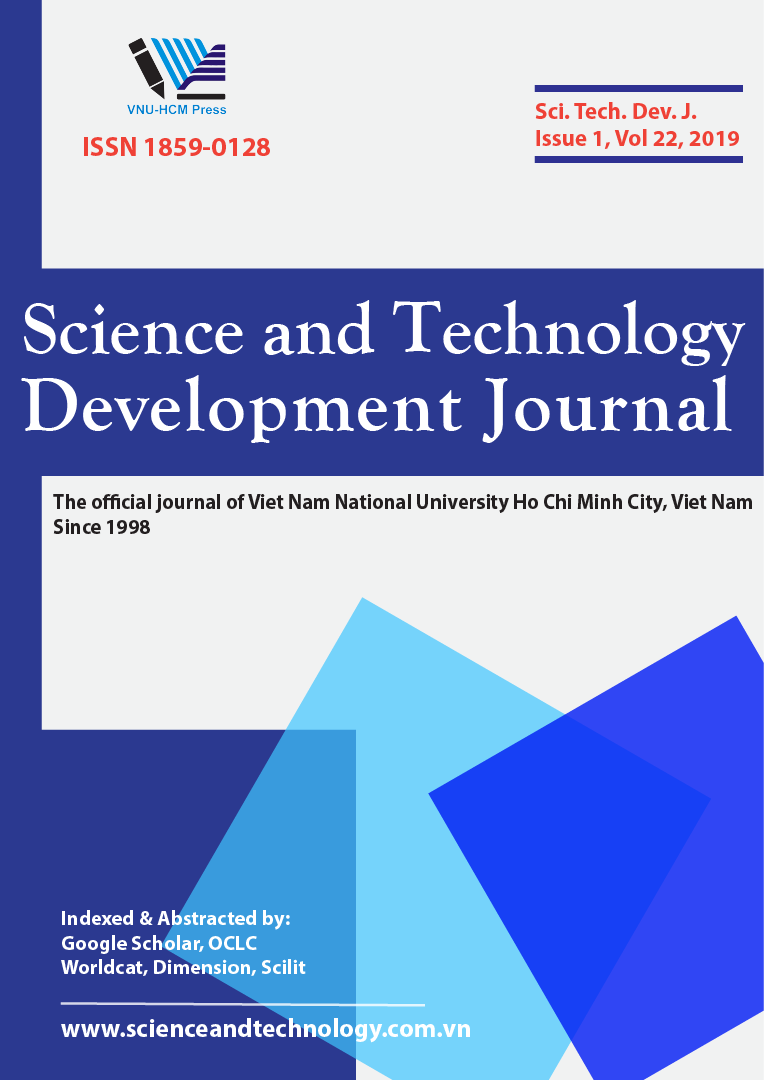Downloads
Abstract
Aerobic granular sludge has attracted extensive interest of researchers since the 90s due to the advantages of aerobic granules such as good settling ability, high biomass accumulation, being resistant to high loads and being less affected by toxic substances. Studies, however, which have mainly been carried out on synthetic wastewater, cannot fully evaluate the actual ability of aerobic granules. Study on aerobic granular sludge was performed in sequencing batch reactors, using seeding sludge taken from anaerobic sludge and tapioca wastewater as a substrates. After 11 weeks of operation, the granules reached the stable diameter of 2- 3 mm at 3.7 kgCOD/m3.day organic loading rate. At high organic loads, in range of 1.6 - 5 kgCOD/m3.day, granules could treat effectively COD, N, P with performance of 93 – 97%; 65 – 79% and 80 – 95%, respectively.
Issue: Vol 16 No 1 (2013)
Page No.: 40-48
Published: Mar 31, 2013
Section: Sciences of Earth and Environment - Research article
DOI: https://doi.org/10.32508/stdj.v16i1.1386
Download PDF = 629 times
Total = 629 times
Most read articles by the same author(s)
- Thuy Thi Thanh Duong, Kien Trung Pham, Phuoc Van Nguyen, Phuong Thi Thanh Nguyen, Production of biodiesel from vegetable oils and animal fats in waste water , Science and Technology Development Journal: Vol 16 No 1 (2013)
- Phuong Thi Thanh Nguyen, Phuoc Van Nguyen, Enhancing efficiency of biogas collection from industrial organic sludge , Science and Technology Development Journal: Vol 16 No 1 (2013)
- Lam Minh Nguyen, Phuoc Van Nguyen, Triet Minh Lam, REVIEW CARRYING CAPACITY OF VAM CO DONG RIVER OF LONG AN PROVINCE FOR MAKING AN EXHAUST WASTE MANAGEMENT LICENSING , Science and Technology Development Journal: Vol 15 No 4 (2012)
- Phuoc Van Nguyen, Phuong Thi Thanh Nguyen, Thu Thi Le, TREATMENT OF TAPIOCA WASTEWATER BY USING BIOLOGICAL HYBRID SYSTEM , Science and Technology Development Journal: Vol 12 No 2 (2009)
- Phuoc Van Nguyen, Phuong Thi Thanh Nguyen, Sau Thi Tran, A STUDY ON TREATMENT TECHNOLOGY FOR COCONUT PRODUCTION WASTEWATER , Science and Technology Development Journal: Vol 12 No 13 (2009)
 Open Access
Open Access 










